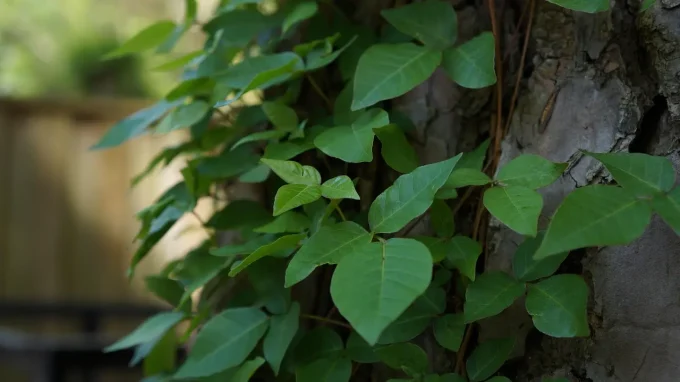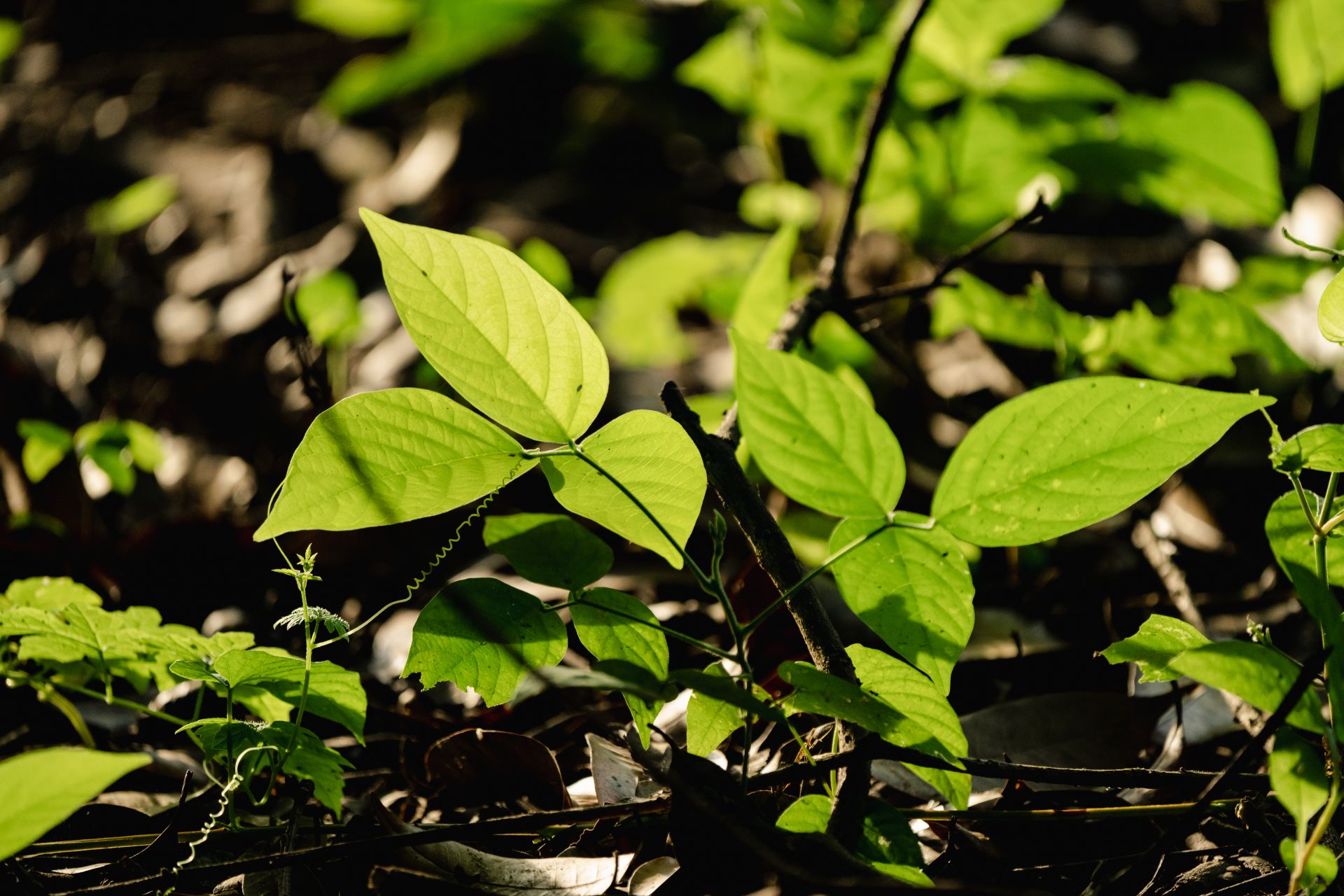Many of us often wonder about edible plants in nature. What plants can you eat, and which ones should you stay away from? If you’re camping and/or backpacking, you may encounter a scenario where you’ll need to eat plants – maybe you ran out of food, or your backpack ended up being overtaken by raccoons.
So, if you’re developing a list of edible plants, you need to go through all your common forest vegetation. If you’re asking yourself, can you eat poison ivy? It’s time you found out.
Maybe you’ve stumbled across survivalist forums, or a friend swears they know a guy who “built up immunity” by eating poison ivy on purpose. It sounds wild, maybe even tempting, to test the limits of your survival skills. But before you think of adding poison ivy to your next wilderness salad, there are some hard truths, medical facts, and safety warnings you absolutely need to know.
IMPORTANT: This article does not provide medical advice – it’s just for entertainment purposes only. You should NEVER eat poison ivy.
Key Takeaways (Read This First)
- No, you should not eat poison ivy. Ever.
- Even small amounts can cause life-threatening internal reactions, not just a rash.
- There is no medically approved way to build immunity by eating poison ivy.
- If you or someone you know accidentally ingests poison ivy, seek medical help immediately.
Also read: Types of Edible Snails
What is poison ivy?
You’ve probably heard of poison ivy (Toxicodendron radicans), but not everyone has encountered it. Poison ivy is an Asian and North American flowering plant which has a pretty good reputation for causing itching, irritation and allergic rashes when touching it.
The rash is caused by urushiol, which is a clear liquid in the plant’s sap. Poison ivy is eaten by many animals, including birds. However, to humans, it’s simply seen as a weed and most people are allergic to it.

How to identify poison ivy
Before we show you ways of eating poison ivy, it’s important that you know how to identify it in the wild, especially since it is difficult to differentiate it from other plants. It has some distinctive characteristics, so let’s check them out below!
Leaves: Groups of three. “Leaves of three, let it be” is the classic saying for a reason. Even if you see a plant with groups of three leaves that are not poison ivy, it’s still safer to simply avoid/ignore them
Color: Spring leaves are bright green, turning deep green in summer, and red/orange in fall.
Shape: Can look like a vine climbing a tree or a low shrub. Sometimes with white or cream berries in late summer and fall (these are the poison ivy’s fruits, which are also poisonous).
Texture: Waxy on top, sometimes fuzzy underneath. But never touch to check it!
Tip: Always double-check local guides for lookalikes, like poison oak and poison sumac, depending on the area you’re about to explore.
Also read: UV Index and Tanning Guide
Why Would Anyone Eat Poison Ivy?

It sounds like a ridiculous idea, but every so often, survival guides and old stories mention people trying to “build up a tolerance” by eating small amounts of poison ivy. The theory is that you can train your body not to react to urushiol, making you immune to its effects.
Some people also ask, “What if I’m stranded with nothing to eat – could poison ivy save my life?” Or maybe, “Animals eat it. Why can’t we?”
And the answer is pretty much common sense: because some animals can eat things we, humans, can’t and never should. And there are plenty of other edible plants to consume in a survival situation.
There’s a world of difference between brushing poison ivy on your skin and swallowing it. Internally, urushiol doesn’t just make you itchy. It can cause swelling in your mouth, throat, digestive tract, and even your airway. This can be fatal. Severe cases require emergency medical intervention, so this is no joke!
There’s also no reliable or medically approved protocol for “building immunity” to urushiol in humans. In fact, repeated exposure is more likely to make your reactions worse than the other way around.
So, when it comes to ingesting it, the risk is not just a rash. It’s potential hospitalization, permanent organ damage, or death.
If you, a child, or anyone in your care accidentally swallows any part of poison ivy, call poison control or go to the nearest ER immediately. Do NOT try home remedies for internal exposure.
Also read: Best Boonie Hat
What to Do for Skin Reactions

Most people know the misery of a poison ivy rash, and it’s something you never want to go through again, but there are ways to ease the itch and help your skin heal faster:
1. Aloe Vera Gel
Aloe vera is a great option that you can use to directly place onto the inflamed area. Make sure that the aloe vera gel you use is organic and high-quality. You can also use an actual aloe vera plant as well.
2. Baking Soda Paste
Common kitchen baking soda is another great remedy to relieve itchiness from poison ivy. Place ½ cup of baking soda into a bathtub of warm water.
Or you can use 3 teaspoons of baking soda with one teaspoon of water and mix it into a paste. You can apply the paste directly onto the inflamed area.
3. Organic Witch Hazel
If you have witch hazel, you can dab a small amount onto the inflamed area. Witch hazel not only acts to relieve the itch but it also cleanses the area.
4. Oatmeal Paste
You probably didn’t think that oatmeal paste wasn’t a remedy. But it’s a great way to relieve the rash.
You want to cook a small amount of oatmeal and directly place it onto the inflamed area. Make sure that you don’t apply the oatmeal onto the skin when it’s too hot.
It’s the most ideal if you place the oatmeal onto the area when it’s warm. That way, it’ll be able to cool itself while on the affected area. You can also mix the oatmeal with a teaspoon of baking soda which will act as an extra itch-reliever.
5. Soap and water
Sometimes, soap and water just does the trick. Because urushiol is an oil, using plain water will not be able to remove it.
Using dish soap will help to break up the oil that’s left on your skin. Dish soap will minimize the spread of the poison and reduce the rash.
If you have a severe reaction (swelling, difficulty breathing, rash on your face or genitals, or widespread blisters), see a doctor asap. Also, using creams created specifically for allergic reactions and rashes, usually antihistaminic creams, can be helpful.
To get rid of your itchy, red rash, here are some natural remedies. For more resource on how long until poison ivy rash appears, see our earlier article on this.
Myths about poison ivy
There are many myths floating around about poison ivy that need to be debunked, like the ones I’m listing below:
- Poison ivy is contagious: This is a very common belief which just isn’t true. You cannot get dermatitis from touching someone else unless they still have urushiol on their bodies or clothing (which normally isn’t the case)
- Everyone is allergic to poison ivy: This isn’t the case actually. Though it is a common allergen with 85% of the population having an intolerance to it, 15% of the population have no reaction to poison ivy. But don’t test it – it’s better not to know that you’re not allergic than develop that horrible rash.
- Once allergic, always allergic: It’s a very common association with allergies that once you experience a reaction, you’ll always have a reaction. Every individual’s sensitivity varies over time and season. Many people who were allergic to poison ivy as children no longer have the sensitivity to it as adults.
- Urushiol does not spread: You may think that if you come into contact with urushiol, it’ll spread throughout your body. This isn’t true. Urushiol is a thick oil which stays only on the area is touched. You may think that it looks like it’s spreading, but that’s only because your body is developing an allergic reaction to it over a long period of time.
- Poison ivy is not active year-round: Many people think that poison ivy is only active during the spring when the leaves are bright green. However, poison ivy is active year-round. This is important if you’re starting to work on building your immunity in the winter. So, regardless of the season, you need to start on a low consumption of poison ivy leaves.
Conclusion
While it’s easy to get caught up in stories of people building “immunity” to poison ivy, the reality is simple: the risks far outweigh any perceived benefits. I’ve spent enough time outdoors to know that being prepared means knowing what to avoid, not what to dare yourself to eat.
If you’re ever in doubt, err on the side of caution. Your best move? Steer clear, and leave poison ivy to the squirrels and birds. And maybe continue reading something interesting next: How Far Do Mosquitoes Travel?

Daniel is a gear freak when it comes to hiking, climbing and camping. He went to REI Outdoor School to meet new people and learn best practices. Don’t even try to argue with him about the latest backpack or ice axe, he tried most of them. Daniel’s dream is to climb Mount Everest.

What a great article Jerry. This is really helpful especially for those who love hiking and camping. It is really important to know these kinds of information in case you encounter poison ivy. Thank you also for debunking the most common myths.I really thought that everyone is allergic to it.
I think that it is really crucial to know the basics of various plants if you enjoy camping and hiking. It is nice that you have already summarized all the important details about poison ivy. As for the myths, thank you for clarifying that the plant is actually not contagious and that it is active all-year round.
Always be careful out there!
Thanks! Be careful, friend!
Emergencies can happen suddenly, be careful with this plant it can kill and you are important.
Absolutely. Nobody should eat poison ivy!
To the nay sayer:
Have you tried it?
I wish I knew about this option when I was a young lad when working on a farm 40 some years ago or 3 yrs ago when I found myself pulling it out with gloved hands hoping I would not breakout but did. The rash lasts 14 days for me pretty consistently.
I tried it! Then last summer I learned of this method and tried it prophylactically with very positive results. This spring I got exposed to the oil and after 6 days of itchy rash I took a small leaf (approx. 1/4 leaf) to find the next afternoon it was beginning to dry up. This method will not work for you, oh nay sayer, but it has been very helpful for me.